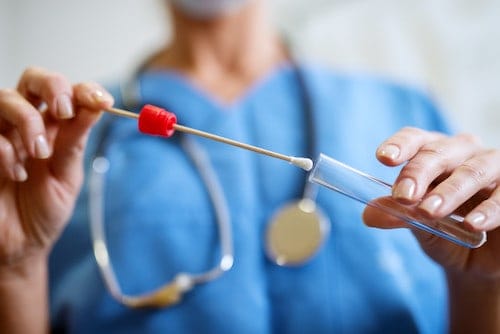
When we were younger, we were all taught the basic facts of life that made creating a family seem cut and dry. But today’s life matters and relationship issues are a little bit messy, and life questions aren’t always answered accurately with a yes or no question.
For over 400,000 Americans annually, some of those questions are answered accurately with a DNA paternity test. Discover everything you need to know about blood and DNA paternity tests right here.
What Are DNA Paternity Tests?
DNA paternity tests are scientific tests that determine the paternity of a child in question. They are usually done in either of two methods, a blood sample or buccal cheek swab.
In some cases, both of those methods occur in DNA testing.
For blood paternity tests, a sample of blood is taken from either the mother or father, and both, and compared with blood samples of a child. The DNA strands in the blood samples of the alleged parents are extracted and then compared to that of the minor child.
Sometimes a cheek swab can determine DNA matching as well.
These tests are considered to be 99 percent effective. Approximately 30 percent of users that try them have their hunches confirmed, that they are not the father of the child in question.
How Do Cheek Swab Tests Work?
The paternity of a child can be assessed with a cheek swab. Under this method, a sample is collected from the inside of the cheek of the alleged mother, father, and also of the child in question.
Every child will get half of their DNA from their biological mother, and half from their biological father.
When scientists take a cheek swab, they will look for polymerase chain reactions in the cells, and then they will take approximately 16 DNA fragments from the cells.
Eight of those fragments should match the mother and 8 should match the alleged paternal sample. If they don’t, the alleged paternal match is not the father.
This form of testing has a 99 % accuracy rate.
How Do Blood DNA Paternity Tests Work?
When blood is used as the sample for a DNA paternity test, scientists look for what are called biochemical markers. Under this test, proteins from the blood samples of the mother, alleged father, and minor child are extracted.
Those proteins are then put in a gel-like substance, such as agar or potato starch. Scientists run an electric current through the gel to isolate what are called isozymes.
Those isozymes of the child’s sample should match the isozymes of the alleged paternal sample. If they do not, the adult male sample is ruled out as a potential father to the child in question.
Legal DNA paternity testing buys you peace of mind. These tests are 99 percent effective.
You Are Not Alone
Having to undergo a paternity test experience in your life can be isolating. But it doesn’t have to be.
You are not the only person in the country undergoing this. Millions of paternity tests are sold online.
This market will grow from a $70 million dollar market in 2015 to a $340 million dollar market by 2022. You are not alone.
Sleep Better Tonight
Information is power, and when it comes to information related to your children, it also helps to give you a night of better sleep. Asking for a DNA paternity test doesn’t have to become a Maury Povich type drama situation.
Let’s do this! With today’s 99 percent reliability rate, get the DNA test and secure peace of mind and better sleep, and an even better life, when you know for sure.
Do your due diligence and trust the professionals and experts covering the business of health care experts and more, today. Keep browsing our site for more health-related posts.
The Editorial Team at Healthcare Business Today is made up of skilled healthcare writers and experts, led by our managing editor, Daniel Casciato, who has over 25 years of experience in healthcare writing. Since 1998, we have produced compelling and informative content for numerous publications, establishing ourselves as a trusted resource for health and wellness information. We offer readers access to fresh health, medicine, science, and technology developments and the latest in patient news, emphasizing how these developments affect our lives.







